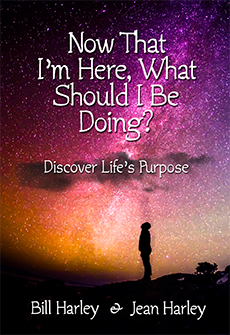By Bill Harley
One psychological definition of depression in human beings is learned helplessness. For those who wrestle with chronic depression and those who are newly experiencing it, the worldwide pandemic operates like a depression-accelerator. Because there are so many things around us that we cannot control and do, and the end is not in sight, we are learning helplessness.
I have studied a lot of psychology in my adulthood; but my first experiences with psychology—and some of the most instructive for unlearning helplessness—were in childhood. Looking back, I realize that my parents, like most, applied reward and punishment and, for the most part, it positively shaped my development. The operating principle seemed to be that, in both this life and the next, virtue gets rewarded and mischief gets punished.
Being read to as a child also exposed me to psychological principles. For example, in my favorite children’s story, The Three Little Pigs, the 3rd little pig builds his house with bricks and the wolf cannot blow it down. Then he evades the wolf’s trap by getting up early in the morning and accomplishing his tasks before the wolf even arrives. The operating principles seemed to be that we should strive for excellence in all things; and having courage and being proactive lead to good outcomes.
In my second most favorite children’s story, The Little Engine That Could, a little train engine surrounded by larger, more powerful and experienced train engines, has as his mantra, “I think I can!” Running along the track, his rhythmical choo-choo sound is “I think I can, I think I can!” Through his hard work and concern for others, he becomes the outstanding servant of his community and his choo-choo sound becomes a joyful “I thought I could, I thought I could”! The operating principles seemed to be that one should work hard and take full responsibility for all aspects of one’s life regardless of one’s circumstances; serving others brings joy to the server and the served; and having faith in one’s capacities leads to greater achievement than doubting one’s capacities.
These psychological principles combine to instruct us on how to unlearn helplessness and counter the depressive effects of the pandemic:
In both the material & spiritual worlds virtue gets rewarded and mischief gets punished. So spend time developing, polishing and manifesting virtues such as compassion, patience, being content with little, generosity, independently searching out the truth, honoring justice and equity, intellectual perception, scientific discovery, truthfulness, benevolence, being of service to others, honoring your word, and obedience to divine teachings.
Strive for excellence in all things—whether it is organizing a closet, vacuuming the house, cleaning the garage, guiding your children, creating a poem, painting, or song, or doing your profession remotely.
Having courage & being proactive lead to good outcomes. When we are sheltering in place it is easy to shy away from challenges and put things off until tomorrow. Do just the opposite and good outcomes and positive feelings will surround you. The pandemic has changed the outer landscape, but your inner landscape is still at full potential.
Work hard & take full responsibility for all aspects of your life regardless of your circumstances. When we blame others and play the victim, we embrace helplessness. When we take full responsibility and make incremental improvements in our and other people’s lives, we embrace positivity, achievement, confidence, and dignity.
Serving others brings joy to the server & the served. Every person’s unique life purpose is intertwined with this principle. Do an experiment and try it.
Having faith in your capacities leads to greater achievement than doubting your capacities. Pray for assistance, believe in your capacities, and take on the hard things—whether they are humble chores or epic aspirations. Remember the old aphorism: if you think you can, or you think you can’t—either way you’re right!
All these psychological principles are undergirded by profound, depression-proof spiritual principles. To explore these concepts more fully, read Jean’s and my first book, Now That I’m Here, What Should I Be Doing?, about the three ultimate purposes of life and the spiritual, social and intellectual growth dynamics that need to be navigated to achieve these purposes. You will better understand the purposes of tests and difficulties in life and how to transform them into opportunities for growth, service, and fulfillment in both this life and the next.
Also, read Jean’s and my second book, TRANSFORMED: How to Make the Decisions That Change Your Life, about how to draw upon these same depression-proof spiritual principles to make transformative life decisions—whether alone or in a group—which advance you and society both materially and spiritually.






















